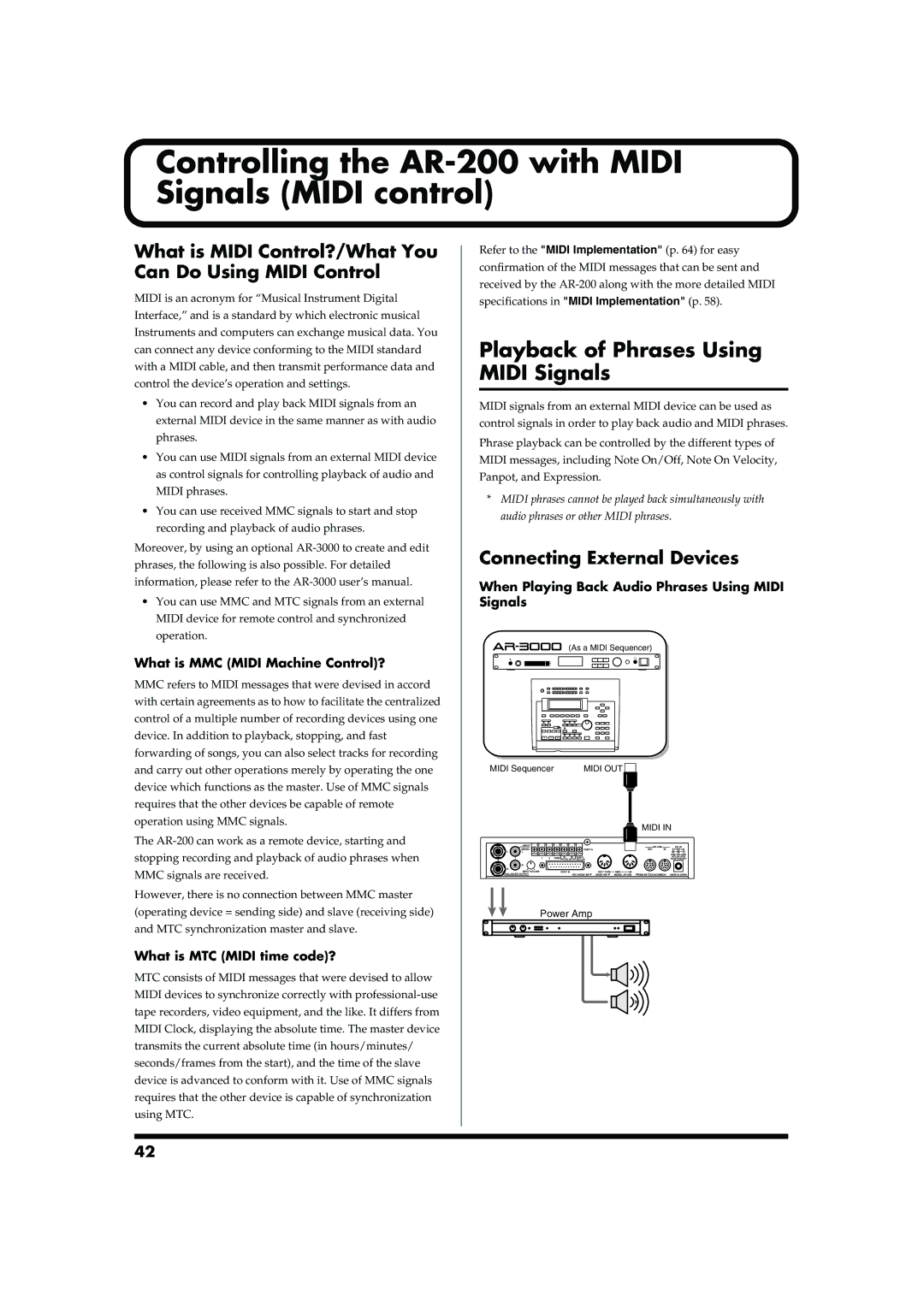
Controlling the AR-200 with MIDI Signals (MIDI control)
What is MIDI Control?/What You Can Do Using MIDI Control
MIDI is an acronym for “Musical Instrument Digital Interface,” and is a standard by which electronic musical Instruments and computers can exchange musical data. You can connect any device conforming to the MIDI standard with a MIDI cable, and then transmit performance data and control the device’s operation and settings.
•You can record and play back MIDI signals from an external MIDI device in the same manner as with audio phrases.
•You can use MIDI signals from an external MIDI device as control signals for controlling playback of audio and MIDI phrases.
•You can use received MMC signals to start and stop recording and playback of audio phrases.
Moreover, by using an optional
•You can use MMC and MTC signals from an external MIDI device for remote control and synchronized operation.
What is MMC (MIDI Machine Control)?
MMC refers to MIDI messages that were devised in accord with certain agreements as to how to facilitate the centralized control of a multiple number of recording devices using one device. In addition to playback, stopping, and fast forwarding of songs, you can also select tracks for recording and carry out other operations merely by operating the one device which functions as the master. Use of MMC signals requires that the other devices be capable of remote operation using MMC signals.
The
However, there is no connection between MMC master (operating device = sending side) and slave (receiving side) and MTC synchronization master and slave.
What is MTC (MIDI time code)?
MTC consists of MIDI messages that were devised to allow MIDI devices to synchronize correctly with
Refer to the "MIDI Implementation" (p. 64) for easy confirmation of the MIDI messages that can be sent and received by the
Playback of Phrases Using MIDI Signals
MIDI signals from an external MIDI device can be used as control signals in order to play back audio and MIDI phrases.
Phrase playback can be controlled by the different types of MIDI messages, including Note On/Off, Note On Velocity, Panpot, and Expression.
*MIDI phrases cannot be played back simultaneously with audio phrases or other MIDI phrases.
Connecting External Devices
When Playing Back Audio Phrases Using MIDI Signals
fig.midi-01
(As a MIDI Sequencer)
MIDI Sequencer | MIDI OUT |
MIDI IN
Power Amp
42
